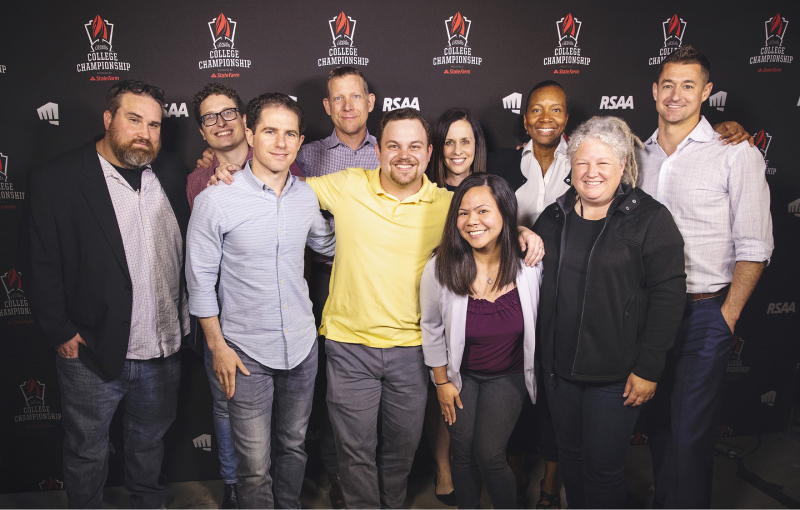
Pictured: RSAA advisory board. Credit: Riot Games
Mentioned in this article
In May of this year, Riot Games ![]() took its college division for League of Legends to the next logical level. As a standalone governing body, the Riot Games Scholastic Association of America (RSAA) is looking to build a long-term presence for the game on campuses, shifting from student-run clubs to varsity programs and college conferences. On the most recent episode of The Esports Observer Podcast, RSAA’s leadership team recounted the creation and initial steps of the new organization.
took its college division for League of Legends to the next logical level. As a standalone governing body, the Riot Games Scholastic Association of America (RSAA) is looking to build a long-term presence for the game on campuses, shifting from student-run clubs to varsity programs and college conferences. On the most recent episode of The Esports Observer Podcast, RSAA’s leadership team recounted the creation and initial steps of the new organization.
“Looking back at the history of how the League of Legends ![]() college community has grown, and how Riot’s support has grown around that, it’s largely been student-focused,” said Matt Birris, head of scholastic at Riot Games, who noted that the publisher was lacking formalized communication channels with schools, as it pertained to supporting clubs and registering teams.
college community has grown, and how Riot’s support has grown around that, it’s largely been student-focused,” said Matt Birris, head of scholastic at Riot Games, who noted that the publisher was lacking formalized communication channels with schools, as it pertained to supporting clubs and registering teams.
Since 2014, Riot Games has given away millions of dollars in scholarships through competition, while also looking at infrastructure opportunities. The latter includes organizing the annual college championship, and most recently building a coaches poll with ESPN ![]() .
.
“Right now, scholarships have grown tremendously, and are being distributed by schools now, as opposed to just Riot,” said Birris. “It actually vastly outweighs the amount of scholarship money that Riot distributes, by a magnitude of 600%. So we’re thinking a lot more is this is the most valuable way to spend those resources for schools and students.”
Helping Riot evolve its view on the college space is a board of advisors featuring esports representatives from institutions including the University of California Irvine, University of Utah, Big Ten Network, Mountain West Conference, and Robert Morris University. The board held its first meeting on May 23, in tandem with the college championship finals. Riot Head of College Michael Sherman said the discussion focused on continued growth and trajectory for college League of Legends.
“One of the big points for this year was the growth of participation,” said Sherman. “In 2018 we had about 240 teams competing in our season, and this year we jumped to 354.” One of the largest percentages of Riot’s North American playerbase is college students, due to a number of factors, such as the ease of finding like-minded gamers, having access to PCs, and young people having autonomy over their schedule for the first time.
As Riot looks ahead, further commercialization of the college space will be a constantly revolving question. While State Farm ![]() has re-upped its support of the championship for a third year, the continued growth of the professional circuit in North America, and segmented audiences across universities means Riot is more thoughtful with its spend in the college space.
has re-upped its support of the championship for a third year, the continued growth of the professional circuit in North America, and segmented audiences across universities means Riot is more thoughtful with its spend in the college space.
“There’s not a world we’re working towards where 200,000 people are watching any given college game in the week, every week,” said Sherman, adding that Riot scales its college scene differently to the pro circuit.
“There’s a bigger emphasis on creating content and opportunities for the players at each school […] an example is the coaches poll, which we worked with ESPN to build this year, which doesn’t have commercialization tied to it, but was a broad opportunity to engage the entire playerbase.”
The TEO Podcast is available on both iTunes and Spotify.

